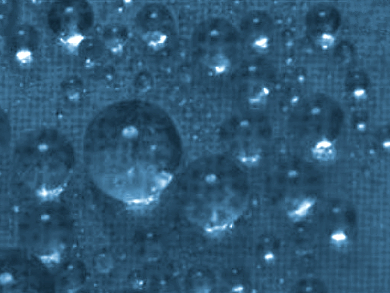Harsh environments such as deserts have caused some of the animals found there to evolve interesting survival mechanisms. The Namib Desert beetle (Stenocara sp.), for example, survives in the dry desert by tilting forward and collecting water from humid wind on its body. The beetle’s back has a hydrophobic surface with hydrophilic bumps. This structure allows the formation of very fine drops of water on the bumps, which grow and then roll down the beetle’s back towards its mouthparts.
Kesong Liu, Beihang University Key, Beijing, China, Xiaolin Wang, University of Wollongong, Australia, and colleagues have developed a material with a superhydrophilic/superhydrophobic patterned surface that mimics the Stenocara beetle and could be used for water harvesting. The team first coated a plastic disc with a commercially available superhydrophobic silica poly(dimethylsiloxane) (PDMS) spray. After drying, pulsed laser deposition (PLD) was used to deposit superhydrophilic platinum nanoparticles on the surface. During this process, the team used a steel mesh as a mask to create a patterned structure with superhydrophilic squares and a superhydrophobic grid (pictured).
In contrast to purely superhydrophobic surfaces, small water droplets adhere to the patterned material and do not easily roll off, similar to the Stenocara beetle’s surface. The researchers used a humidifier to test the material’s properties for water harvesting from humid air. They found that the patterned surface outperformed both pure silica poly(dimethylsiloxane)-coated and pure Pt-nanoparticle-coated surfaces. According to the team, this approach could have applications in water harvesting on a large scale in arid areas of the world.
- Desert Beetle-Inspired Superwettable Patterned Surfaces for Water Harvesting,
Zhenwei Yu, Frank F. Yun, Yanqin Wang, Li Yao, Shixue Dou, Kesong Liu, Lei Jiang, Xiaolin Wang,
Small 2017.
DOI: 10.1002/smll.201701403




